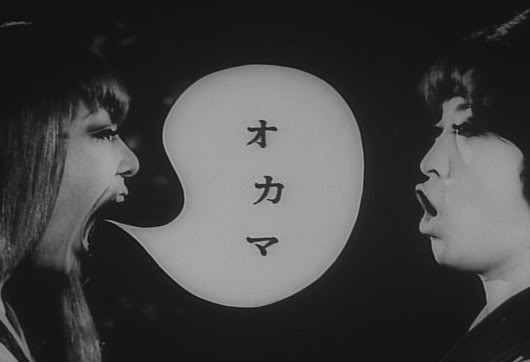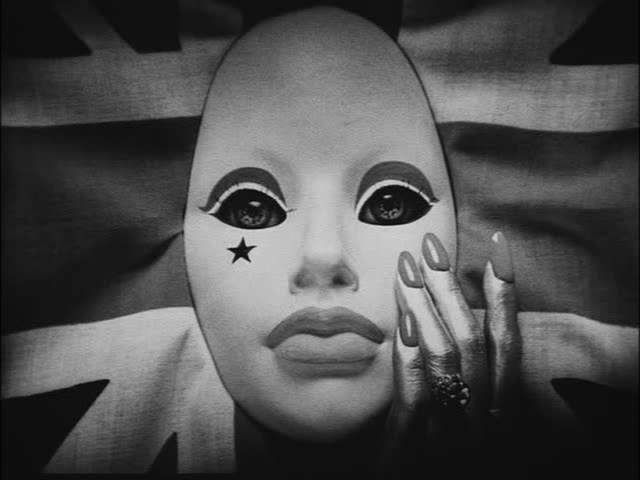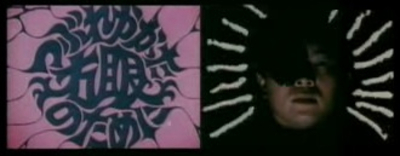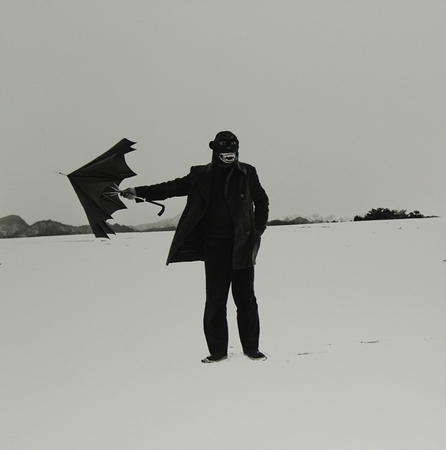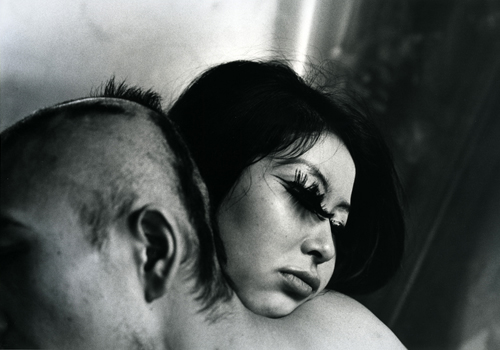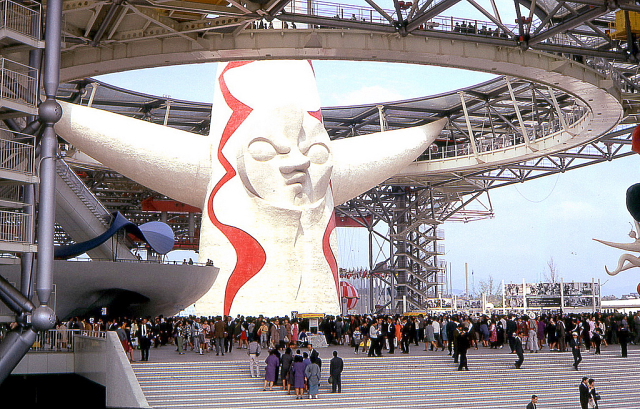‘Diva fight’ – Still taken from Bara no soretsu [Funeral Parade of Roses] – Matsumoto Toshio, 1969
I will be presenting a paper at the SOAS Centre for Film and Screen Studies Symposium on the 11th of June entitled ‘The angura Diva: Photodynamism and Identity in Matsumoto Toshio’s Funeral Parade of Roses’. The paper examines the role of the transvestite diva within a theoretical framework focusing on the visual collage and countercultural subtext of Matsumoto’s film.
Eddie! Still taken from Bara no soretsu
If you are in London on either Monday 10th (for the Symposium screening of Kurosawa’s The Idiot), or Tuesday the 11th for what looks to be fascinating programme of speakers charting and unpicking the diva persona in Japanese film, please do come along. Register online here and take a look at the exciting programme
Still from Bara no soretsu

